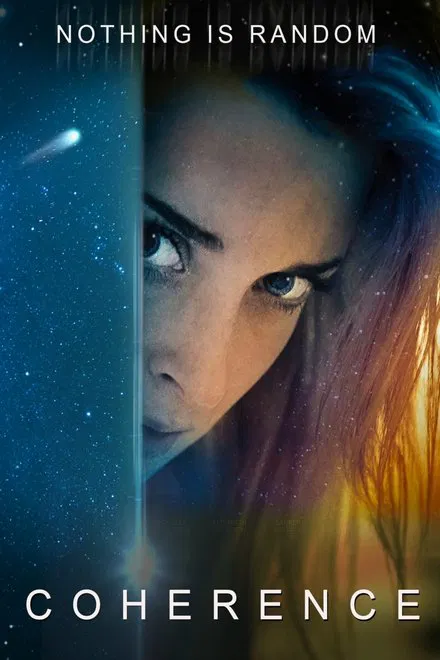
Directed by: James Ward Byrkit
Starring: Emily Baldoni, Maury Sterling, Nicholas Brendon, Elizabeth Gracen
🌠 Introduction: The Night the World Split
Coherence (2013) is a micro-budget science fiction thriller that achieves cosmic disorientation with little more than a dinner table, a comet, and a handful of actors improvising their way through quantum mayhem. What begins as a gathering of friends devolves into a labyrinth of parallel universes, doppelgängers, and existential dread. The film’s narrative and temporal structure are as fragmented as the reality it depicts, making for one of the most intellectually and emotionally disturbing twist movies of the decade.
☄️ The Premise: Schrödinger’s Dinner Party
The setup is deceptively simple: a group of friends reunites for dinner on the night a mysterious comet passes close to Earth. As the comet streaks overhead, the lights flicker and reality begins to bend. Characters find inexplicable objects, duplicate photographs, and—most disturbing of all—other versions of themselves. The boundaries between timelines dissolve, and the house becomes a crossroads of infinite possibility.
The film’s core conceit is rooted in quantum theory—specifically, the idea of multiple worlds and the collapse of probability. Every choice spawns a new universe; every interaction risks a descent into uncertainty. Byrkit crafts this chaos with handheld cameras, improvised dialogue, and an escalating sense of claustrophobia.
🔀 Twist Timeline: Collisions and Convergences
The narrative soon abandons conventional linearity. As characters venture outside, they encounter “other” houses—some with subtle differences, others with terrifyingly familiar duplicates. The boundaries between these realities grow porous, and the film’s timeline fractures into a web of crisscrossing possibilities. The story becomes a Möbius strip, looping back on itself and refusing easy resolution.
Emily (Emily Baldoni) becomes the audience’s anchor, her struggle to escape the “wrong” timeline mirroring the viewer’s own confusion. In the film’s most haunting sequence, Emily attempts to replace her “better” self in a happier universe—only to discover that every choice has unintended consequences, and that no reality is truly safe from collapse.
💡 Symbolism: Boxes, Numbers, and Uncertainty
Physical objects become symbols of the film’s fractured reality: glow sticks of different colors, numbered notes, photographs with impossible details. These totems mark each timeline, offering brief glimpses of order amid chaos. The box—a recurring motif—contains clues, secrets, and ultimately, the recognition that certainty is impossible. Coherence asks: if you could choose your reality, would you know when you’ve found the “right” one? And how do you live with the knowledge that you might have left someone else behind?
🌌 Existential Horror and Identity
At its core, Coherence is a film about the fragility of self and the terror of uncertainty. The doppelgängers are not just narrative threats; they are symbols of repressed guilt, regret, and longing. The film’s resolution is appropriately ambiguous: Emily may have escaped—or simply become another version of the problem she sought to solve. The horror is not in monsters or violence, but in the realization that the self is always contingent, always one choice away from unraveling.
🎯 Final Thoughts: The Unknowable Infinite
Coherence succeeds not by offering answers, but by immersing viewers in the vertigo of quantum possibility. Its twisty, fragmented timeline mirrors the complexity of choice, memory, and identity in an indifferent universe. In the end, the only certainty is that nothing is ever truly certain.